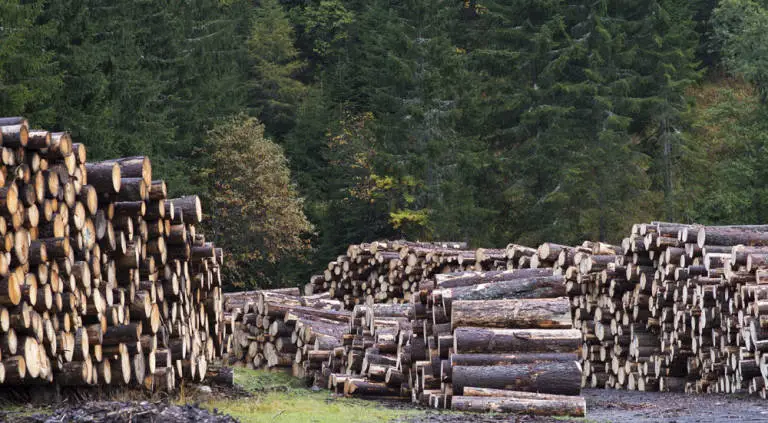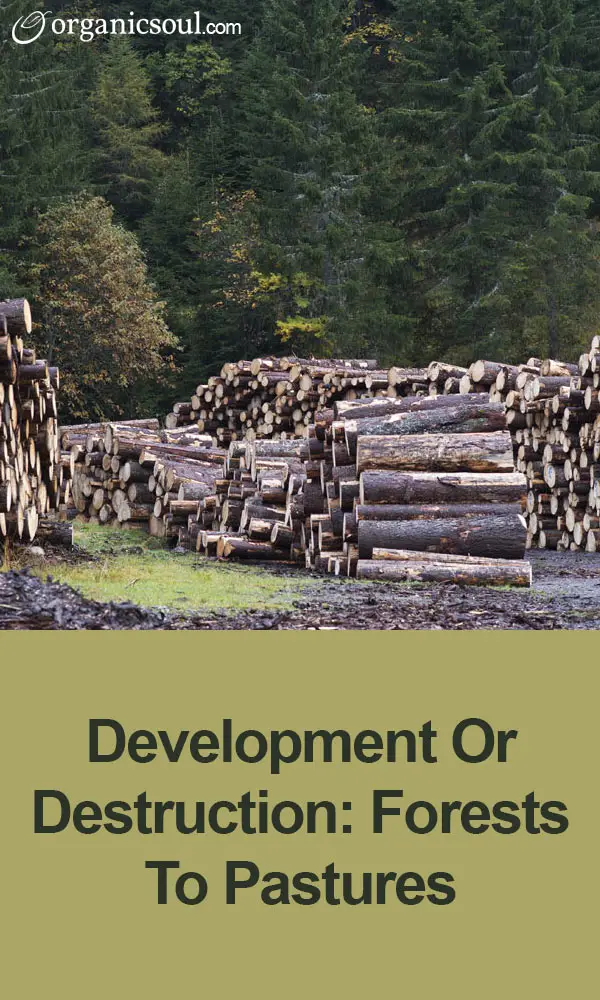
Every year, millions of acres of forest are destroyed to make room for human development. Between 2000 and 2005, the world saw an average loss of 7.3 hectares a year – the size of Panama or the entire Sierra Leone. While some experts acknowledge that the rate of deforestation actually appears to be slowing, they remain united in their assessment that the rate is still alarmingly high and very destructive. Furthermore, the ripple effects of land committed to farming are becoming increasingly negative in consequence.
Like Organic Soul on Facebook
Those in charge are faced with a dilemma; as the world population continues to soar, more land is needed for grazing cattle, growing crops, and raising livestock. Unfortunately, farming acts as a two-headed viper – it actively destroys forests, and, even worse, it leaches chemicals into the soil, water supply, and ends up creating vast dead zones in our oceans.
This forces policy makers and environmentalists to question, “Is it development we are practicing, or is it destruction?”
Deforestation and “Pasture”-ization
Deforestation has taken a deadly toll on the world today. Over the last 8,000 years, humans have converted nearly one-half of the world’s forests into farms, pastures, and cities. What remains exists in patchworks of smaller forests, separated by towns, cities, or other man-made environment. This has resulted in a drop in biodiversity, carbon absorption, and aesthetic beauty of the land.
As the size of forests shrink, the size of pastures grows. Central America has seen a doubling in the size of pastures and number of beef cattle. As those in the meat industry contend, demand for beef practically never goes down. That being so, businessmen and investors flock to pastures for high levels of profits, merrily singing along the way, “get while the getting’s good”.
Dead Zones
While pastures and farming practices are spearheading their way into the little of what remains of the world’s forests, they leave behind a trail of fertilizers, chemicals, and pollutants. Nitrogen and phosphorus – two ingredients in fertilizers that encourage plants to grow – make their way from farms into local streams and rivers, and eventually runoff into the Mississippi River.
Here, 40 percent of the continental United States’ far waterways connect – from Idaho to Michigan and from Ohio to Texas. The Mississippi carries the now nutrient-laden waters downstream into the Gulf of Mexico. As the freshwater is released into the Gulf, it floats on top of the saltwater, preventing oxygen in the atmosphere from mixing with the water below. Furthermore, with abundant sources of nitrogen and phosphorus, huge blooms of algae begin to develop, the food chain is altered, and the oxygen in the area is further depleted.
In time, the water undergoes eutrophication – or high concentration of nutrients – and oxygen zapping, both of which result in drops in biodiversity and biomass. The Gulf of Mexico, like other places in the world (namely the Black Sea and off the coast of Oregon), has already begun to see the effects. Huge fish kills have been reported, spelling problems with those involved with the local fishing industry.
Possible Solutions
While the problem is immense in scope, there are some simple solutions to reduce both the leakage of chemicals and the problem of deforestation.
First, in regards to farming, companies can start by making small changes in their practices to reduce the runoff of chemicals. For one, they can adjust the amount and timing of fertilizers. By limiting fertilizer use altogether, as well as avoiding heavy spraying in stormy weather, the sheer amount of fertilizer leached can be reduced. Better management of animal waste into waterway would also help keep chemicals from entering the gulf. Both solutions would be easy enough to implement, and wouldn’t hurt the reliable profit of cattle grazing.
Next, consumers must begin to realize that their meals are coming from unsustainable farming practices. In other words, the best way to prevent the spread of pastures is to lessen the demand for beef. At minimum, we must begin to demand better farming practices. Although this seems like a tall order for the country of the Big Mac, with the right mix of individual actions and community support, it isn’t impossible.
Like with farming, deforestation practices have two sides of the solution: consumer and producer. Consumers can start by choosing recycled products and becoming more aware. For example, urge your employer to employ better office recycling practices. Likewise, encourage your family and young ones to practice the same awareness.
With the companies making inroads into the forests, there must be better logging techniques implemented. Re-forestation has to take center stage, and it must become mandatory for all areas of deforestation to become replanted.
Conclusion
As a people, we must begin to ask ourselves is the development is really worth the clear destruction. While there may be a certain level of necessity in regards to both logging and farming, there is excess that must be trimmed away. The problem is truly global in scale, but the United States functions as a frighteningly accurate model for the rest of the world.
If you're interested in learning more, I refer you to Dr. Seuss' The Lorax
















